There's nothing worse than your furnace dying in the dead of winter. Very few furnaces up and quit after only a few years; most provide warning signs that trouble is ahead. As a homeowner, it’s your job to spot these signs and take action.
Here are six furnace safety warning signs that you should never ignore.
1. Rising Utility Fees
Utility companies are not the only culprit when it comes to higher monthly bills. When a furnace is not operating at its peak, it consumes more energy. The furnace may just need a repair, but in some cases, rising utility costs could signal that the unit is on its last lap.
2. Uneven Heat Distribution
Are some rooms colder than others? The quality of its heat distribution suffers when a furnace is malfunctioning. Not only does this make the home less comfortable, but it could be a sign of bigger problems.
3. Dust
When a furnace is failing, it often expels greater levels of dust because it can no longer properly clean the air. The first thing you should do if you notice excessive dust is clean or replace your filters. If that does not help, call for a technician to inspect the unit.
4. Strange Noises and Smells
Just as your car makes odd sounds when something is wrong, your furnace can give you audible warning signs. If the unit is making sounds you’ve never heard before, that’s not a good sign. These noises can be the result of anything from loose screws to a failing inducer motor or blower fan motor. Call in a professional to find out.
We all know that awful “rotten egg” smell (actually a chemical called mercaptan) which is added to natural gas as a safety precaution. If you smell it in your home, this is a serious problem because it can mean a gas leak. Leave your home immediately and call the gas company.
5. Carbon Monoxide
A properly functioning gas furnace has a blue flame; if your flame is yellow, that is almost always a warning sign that the unit is producing excessive amounts of carbon monoxide (CO). Other signs to watch out for include rust accumulating on pipe connections, moisture on nearby surfaces, no updraft in the chimney, water leaking from the base of the chimney, and soot streaking.
If you notice any of these signs, have the utility company shut down your gas immediately and make a service call.
When a furnace’s heat exchanger starts failing, it can develop cracks, and that’s another way for carbon monoxide to leak into the air. Burning eyes, nausea, flu-like symptoms and general disorientation are signs of CO exposure.
6. More Frequent Repairs Over Time
You can buy a top-of-the-line furnace and have annual inspections, but all machinery eventually succumbs to age and mechanical failure. A modern furnace should perform effectively for 15-20 years. Anything beyond that is taking a risk you may later regret. An increasing number of repairs in the past 2-3 years is a good indicator that you should start shopping around for a new furnace.
Image: Brian Jackson







